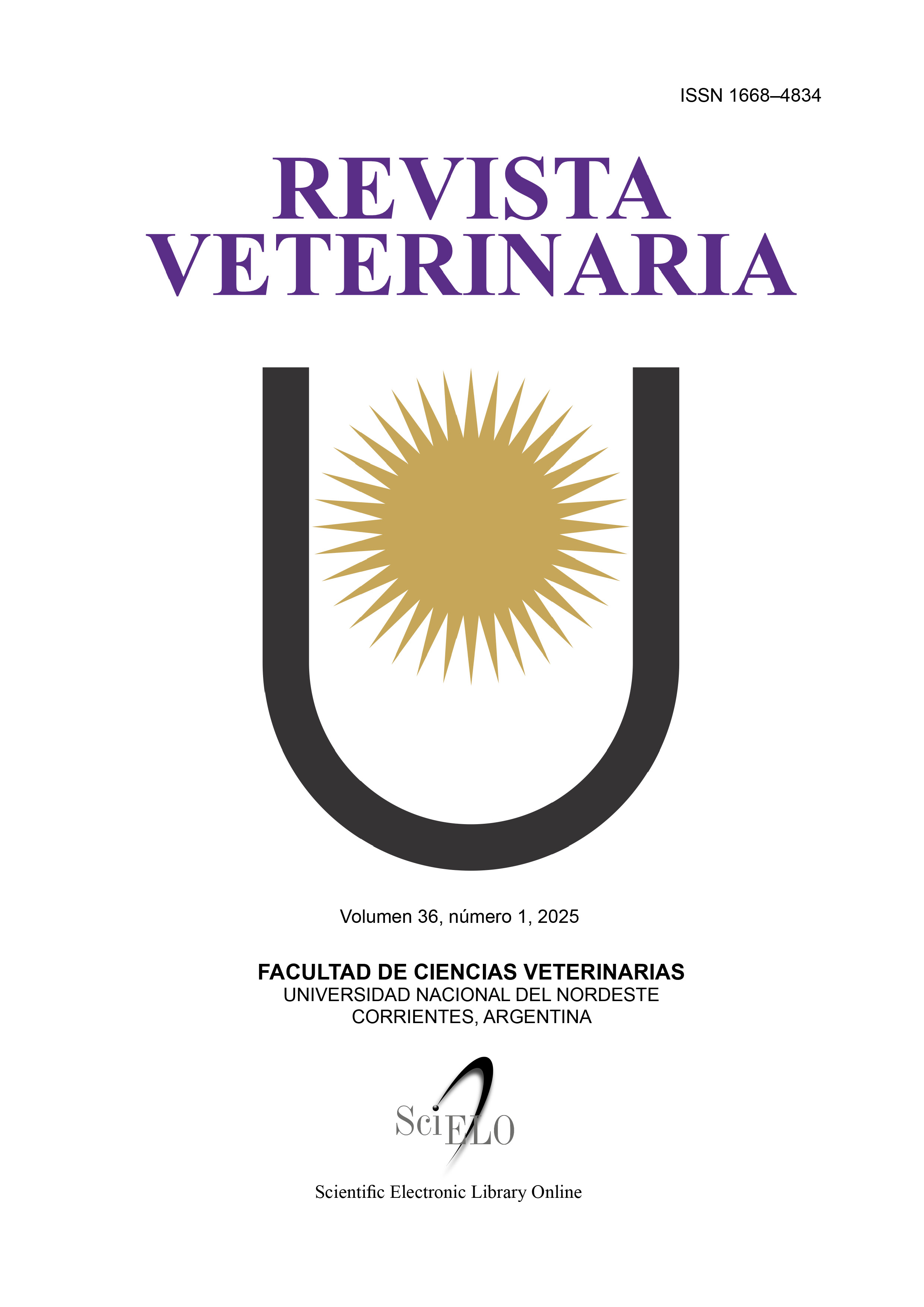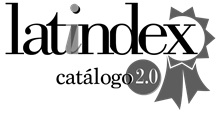Structuring a BALB/c mice colony in the Unidad Experimental de Inmunoterapia of Fundación Jacinto Convit – Venezuela
DOI:
https://doi.org/10.30972/vet.3617988Keywords:
mice colony, strain purity, microsatellite analysis, homozygosity, mixed animal facilityAbstract
Animal models are a fundamental part of preclinical scientific research in the development of new therapies including drugs and gene therapies. For such purposes, it is crucial to have an animal model that is appropriate for specific study. At the animal facility of the Unidad Experimental de Inmunoterapia (UEI) of Fundación Jacinto Convit (FJC), a colony of BALB/c mice was established to maintain a pure strain for experimental research projects in breast cancer, using the 4T1 autologous tumor cell line. The colony was established from two pairs of BALB/c mice provided by Universidad Simón Bolívar, ensuring strict housing conditions in micro-isolators, with appropriate feeding, environmental enrichment, and detailed control of both micro and macroenvironment parameters required for the species. Animals care was managed by a specialized biologist. The expansion of this BALB/c mouse strain was monitored following a pattern of inbred crosses every third litter. Homozygosity was determined by using skin grafting technique among individuals of the same strain and comparative microsatellite analysis. Data from 135 births were analyzed, with a maximum of 6 births per breeding box. Monogamous pairs produced an average of 6.25 ± 2.38 pups per litter, with no unexpected deaths, and an interbirth interval of 27 ± 7.5 days. The overall results obtained in this work demonstrated that the breeding, care, and maintenance protocol of the BALB/c mouse colony at the UEI animal facility of FJC is effective in ensuring the expansion and genetic purity of this strain, hereafter referred to as BALB/c//USB//FJC.
Downloads
References
Arroyo‐Crespo JJ, Armiñán A, Charbonnier D, Deladriere C, Palomino‐Schätzlein M, Lamas‐Domingo R, Forteza J, Pineda‐Lucena A, Vicent M. Characterization of triple‐negative breast cancer preclinical models provides functional evidence of metastatic progression. Int J Cancer. 2019; 145(8): 2267-81.
Bayne K. Environmental enrichment and mouse models: Current perspectives. Animal Model Exp Med. 2018; 1(2): 82-90.
Benavides FJ, Guénet JL. Manual de genética de roedores de laboratorio. Sociedad Española para las Ciencias del Animal de Laboratorio, ed.; Universidad de Alcalá, ed. D.L. 2003.
Bond TA, Richmond RC, Karhunen V, Cuellar-Partida G, Borges MC, Zuber V, Couto Alves A, Mason D, Yang T, Gunter M, Dehghan A, Tzoulaki I, Sebert S, Evans D, Lewin A, O’Reilly P, Lawlor D, Järvelin M. Exploring the causal effect of maternal pregnancy adiposity on offspring adiposity: Mendelian randomisation using polygenic risk scores. BMC Med. 2022; 20(1): 34.
Brown MJ, Symonowicz C, Medina L V., Bratcher NA, Buckmaster CA, Klein H, Anderson L. Culture of Care: Organizational Responsibilities. In: Management of Animal Care and Use Programs in Research, Education, and Testing. Second edition. Boca Raton: Taylor & Francis, 2018. CRC Press; 2017. p. 11-26.
Chebib J, Jackson BC, López-Cortegano E, Tautz D, Keightley PD. Inbred lab mice are not isogenic: genetic variation within inbred strains used to infer the mutation rate per nucleotide site. Heredity (Edinb). 2021;126(1):107-16.
Cohan RA, Inanlou DN, Samiee Aref MH, Zeinali S, Farhoudi R. Microsatellite Marker Analysis for Laboratory Mice Profiling. Adv Biomed Res. 2019;8(1):40.
De Jesús R. ¿Cómo sabemos si los ratones consanguíneos usados en investigación son genéticamente puros? Bol Malariol Salud Ambient. 2003; XLIII: 15-22.
Debre P, Waltenbaugh C, Dorf M, Benacerraf B. Genetic Control of Specific Immune Suppression III. Mapping of H-2 Complex Complementing Genes Controlling Immune Suppression by the Random Copolymer L-Glutamic Acid-’-L-Tyrosine-’(GT)* [Internet]. The Journal of Experimental Medicine. 1976; 144. Disponible en: http://rupress.org/jem/article-pdf/144/1/272/1657862/272.pdf
Farkas B, Boldizsar F, Tarjanyi O, Laszlo A, Lin SM, Hutas G, et al. BALB/c mice genetically susceptible to proteoglycan-induced arthritis and spondylitis show colony-dependent differences in disease penetrance. Arthritis Res Ther. 2009; 11(1): R21.
Ferrara F, Hiebl B, Kunzmann P, Hutter F, Afkham F, LaFollette M, Gruber C. Culture of care in animal research – Expanding the 3Rs to include people. Lab Anim. 2022; 56(6): 511-8.
Festing MF. Evidence should trump intuition by preferring inbred strains to outbred stocks in preclinical research. ILAR J. 2014; 55(3): 399-404.
Fischer ML, Rodrigues GS, Aguero WP, Zotz R, Simão-Silva DP. Refinement as ethics principle in animal research: Is it necessary to standardize the Environmental enrichment in laboratory animals? An Acad Bras Cienc. 2021; 93(1): e20191526.
Fuentes Paredes F, Yanavilca QFA, Tarmeño R. Guía de manejo y cuidado de animales de laboratorio: Ratón. Centro Nacional de Productos Biológicos, Instituto Nacional de Salud, Ministerio de Salud del Perú. Lima, Perú. 2008.
Galassi Geréz PF, Gullace FA. Reproducción en animales de Laboratorio. 1° Parte: Ratas y Ratomnes. Facultad de Ciencias Veterinarias, Universidad de Buenos Aires. Buenos Aires, Argentina. 2004; 22 pp. Disponible en: http://dpd.fvet.uba.ar/cartelera/00010199.pdf
Garber J, Wayne R, Bielitzki J, Clayton LA, Donovan JC, Hendriksen C, Kohn D. Lipman N, Locke PA, Melcher J, Quimby FW, Turner PV, Wood GA, Würbel H. National Research Council (US). Committee for the Update of the Guide for the Care and Use of Laboratory Animals. Guide for the Care and Use of Laboratory Animals. 8th ed. Washington (DC): National Academies Press (US); 2011. PMID: 21595115.
Ghasemi A, Jeddi S, Kashfi K. The laboratory rat: Age and body weight matter. EXCLI J. 2021; 23; 20:1431-1445.
Godoy-Calderón MJ, Salazar V, González-Marcano E, Convit AF. Autologous tumor cells/bacillus Calmette-Guérin/formalin-based novel breast cancer vaccine induces an immune antitumor response. Oncotarget. 2018; 9: 20222-38.
Godoy-Calderón MJ, González-Marcano E, Carballo J, Convit AF. Evaluation of a ConvitVax/anti-PD-1 combined immunotherapy for breast cancer treatment. Oncotarget. 2019; 10(61): 6546-60.
Hess SE, Rohr S, Dufour BD, Gaskill BN, Pajor EA, Garner JP. Home improvement: C57BL/6J mice given more naturalistic nesting materials build better nests. Journal of the American Association for Laboratory Animal Science. 2008; 47(6): 25-31.
Infante JF, Pérez P, Sifontes S, Izquierdo L, Fariñas M, Balboa J, Joó L, Muñoz E, Oliva R, Caro E, Gutiérrez M, Pérez V. Efectividad de la inmunoglobulina antimeningocócica BC en diferentes dosis y su aplicación fraccionada en ratones. Academia.edu. 1998.
Jia T, Wang C, Han Z, Wang X, Ding M, Wang Q. Experimental Rodent Models of Cardiovascular Diseases. Front Cardiovasc Med. 2020; 7: 588075.
Lidster K, Jefferys JG, Blümcke I, Crunelli V, Flecknell P, Frenguelli BG, Gray W, Kaminski R, Pitkänen A, Ragan I, Shah M, Simonato M, Trevelyan A, Volk H, Walker M, Yates N, Prescott M. Opportunities for improving animal welfare in rodent models of epilepsy and seizures. J Neurosci Methods. 2016; 260:2–25.
Löhler J, Sadlack B, Schorle H, Klebb G, Haber H, Horak I. Generalized autoimmune diseases in BALB/c mice with a genetically dependent interleukin-2 deficiency. Verh Dtsch Ges Pathol. 1996; 80:293–6.
Mori Y, Hosono M, Murakami K, Katoh H, Yoshikawa Y, Kuribayashi K, Kannagi R, Sakai M, Okuma M, Masuda T. Genetic studies on experimental autoimmune gastritis induced by neonatal thymectomy using recombinant inbred strains between a high‐incidence strain, BALB/c, and a low‐incidence strain, DBA/2. Clin Exp Immunol. 1991; 84(1): 145-52.
Osorio AM. Ética en la investigación con modelos animales experimentales. Alternativas y las 3 RS de Russel. Una responsabilidad y un compromiso ético que nos compete a todos. Revista Colombiana de Bioética (en línea). 2006; 163-83.
Pulaski BA, Ostrand‐Rosenberg S. Mouse 4T1 Breast Tumor Model. Curr Protoc Immunol. 2000; 39(1).
Reeves PG, Nielsen FH, Fahey GC. AIN-93 Purified Diets for Laboratory Rodents: Final Report of the American Institute of Nutrition Ad Hoc Writing Committee on the Reformulation of the AIN-76A Rodent Diet. J. Nutr. 1993. 123.
Russell WMS, Burch RL. The Principles of Humane Experimental Technique. Methuen, London, 1959. Universities Federation for Animal Welfare. 1959.
Sánchez Treto N, Jiménez Pardo ML, Torres Romo U, Bolaño Escofet R, Ramírez Vázquez G, Hernández Valdés Y. Algunas características biológicas de ratones balb/c del bioterio de la facultad de Ciencias Médicas de Ciego de Ávila. Mediciego. 1995; 1(1): 1-4.
Schepelmann M, Kupper N, Gushchina V, Mesteri I, Manhardt T, Moritsch S, Müller C, Piatek K, Salzmann M, Vlasaty A, Eferl R, Kallay E. AOM/DSS Induced Colitis‐Associated Colorectal Cancer in 14‐Month‐Old Female Balb/C and C57/Bl6 Mice—A Pilot Study. Int J Mol Sci. 2022; 23(9).
Simon MM, Greenaway S, White JK, Fuchs H, Gailus-Durner V, Wells S, Sorg T, Wong K, Bedu E, Cartwright E, Dacquin R, Djebali S, Estabel J, Graw J, Ingham N, Jackson I, Lengeling A, Mandillo S, Marvel J, Meziane H, Preitner F, Puk O, Roux M, Adams D, Atkins S, Ayadi A, Becker L, Blake A, Brooker D, Cater H, Champy M, Combe R, Danecek P, di Fenza A, Gates H, Gerdin A, Golini E, Hancock J, Hans W, Hölter S, Hough T, Jurdic P, Keane T, Morgan H, Müller W, Neff F, Nicholson G, Pasche B, Roberson L, Rozman J, Sanderson M, Santos L, Selloum M, Shannon C, Southwell A, Tocchini-Valentini G, Vancollie V, Westerberg H, Wurst W, Zi M, Yalcin B, Ramirez-Solis R, Steel K, Mallon A, de Angelis M, Herault Y, Brown S. A comparative phenotypic and genomic analysis of C57BL/6J and C57BL/6N mouse strains. Genome Biol. 2013; 14(7): R82.
Song HK, Hwang DY. Use of C57BL/6N mice on the variety of immunological researches. Lab Anim Res. 2017; 33(2): 119.
Spielmann J, Naujoks W, Emde M, Allweyer M, Fänder J, Kielstein H, Quandt D, Bähr I. The Impact of High-Fat Diet and Restrictive Feeding on Natural Killer Cells in Obese-Resistant BALB/c Mice. Front Nutr. 2021; 23: 8.
Tannenbaum J, Bennett BT. Russell and Burch’s 3Rs then and now: the need for clarity in definition and purpose. J Am Assoc Lab Anim Sci. 2015; 54(2): 120-32.
Wang C, Xu YH, Xu HZ, Li K, Zhang Q, Shi L, Zhao L, Chen X. PD-L1 blockade TAM-dependently potentiates mild photothermal therapy against triple-negative breast cancer. J Nanobiotechnology. 2023; 11; 21(1): 476.
Wasson K. Retrospective Analysis of Reproductive Performance of Pair-bred Compared with Trio-bred Mice. J Am Assoc Lab Anim Sci. 2017; 1;56(2): 190-3.
Yang L, Yong L, Zhu X, Feng Y, Fu Y, Kong D, et al. Disease progression model of 4T1 metastatic breast cancer. J Pharmacokinet Pharmacodyn. 2020; 22; 47(1): 105-16.
Zhao X, Zhang K, Daniel P, Wisbrun N, Fuchs H, Fan H. Delayed allogeneic skin graft rejection in CD26-deficient mice. Cell Mol Immunol. 2019; 16(6): 557-567.
Downloads
Published
How to Cite
Issue
Section
License

This work is licensed under a Creative Commons Attribution-NonCommercial 4.0 International License.
Revista Veterinaria (Rev. Vet.) maintains a commitment to the policies of Open Access to scientific information, as it considers that both scientific publications as well as research investigations funded by public resources should circulate freely without restrictions. Revista Veterinaria (Rev. Vet.) ratifies the Open Access model in which scientific publications are made freely available at no cost online.











.jpg)
.jpg)



